You have a retail store and your products are available online.
Now comes the question:
How to make more sales and improve the shopping experience for my customers?
The solution is simple—use retail chatbots. These automated, AI-powered shopping assistants can answer customer service questions, provide recommendations, give out promo codes, and upsell products.
If you’re a little lost on the topic, don’t worry. We won’t let you stay behind the competitors.
Are you ready?
Let’s dive right in!
Chatbots for retail businesses can assist customers in a variety of ways. They provide information about nearby stores, help locate specific products, guide customers through complex purchase processes, and even support loyalty programs. On top of that, our study on chatbot statistics found that about 71% of Gen Zs prefer using chatbots instead of live agents when searching for products.
With that said—
Let’s have a look at some of the best tools for you to use.
Best retail chatbots for your store
There’s no denying it—you have plenty of choices when it comes to chatbots for the retail industry. But are they good options?
We went on a hunt for the best retail chatbot platforms available on the market today.
Here are our findings in a nutshell.
| Platform | Rating | Free plan/trial | Best for |
|---|---|---|---|
| Tidio | 4.7/5 ⭐️ | ✅ | Artificial intelligence |
| IBM Watson Assistant | 4.4/5 ⭐️ | ✅ | Developers |
| Drift | 4.4/5 ⭐️ | ❌ | B2B companies |
Let’s learn a bit more about the best retail bots.
Tidio
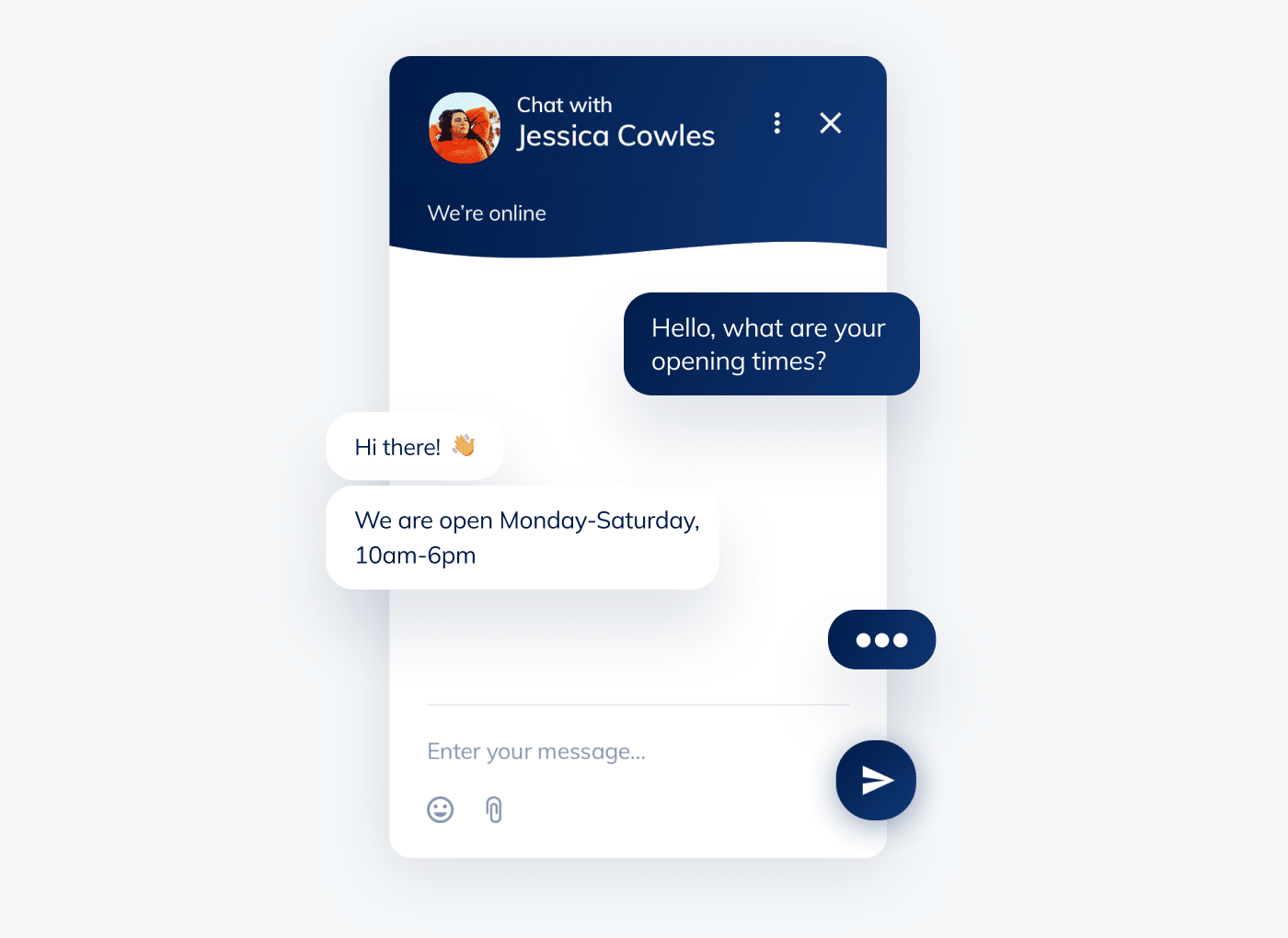
Ratings: 4.7/5 ⭐️ (1,505+ reviews)
Tidio offers chatbots specifically designed for retail stores. It effectively automates customer support and delivers proactive customer service across multiple platforms. This is the best chatbot in retail that leverages artificial intelligence and employs NLP recognition engine for the communication with users.
With its user-friendly visual builder interface and pre-built templates, you can effortlessly generate leads, increase conversion rates, and more without the need to start from scratch. To ensure this is the right choice for you, check Tidio reviews to learn about their experiences.
Main features:
- Lyro chatbot: conversational AI with NLP technology
- Live visitor list
- Order status updates
- Chatbot templates
- Over 20 different chat triggers
- 7-day free trial available
- Free version available
- Starter ($29/mo)
- Growth (starts at $59/mo)
- Plus (starts at $749/mo)
- Premium (starts at $2999/mo)
Improve the customer experience with AI chatbots
Read more: Learn how to enable Lyro conversational AI on your Tidio project.
IBM Watson Assistant
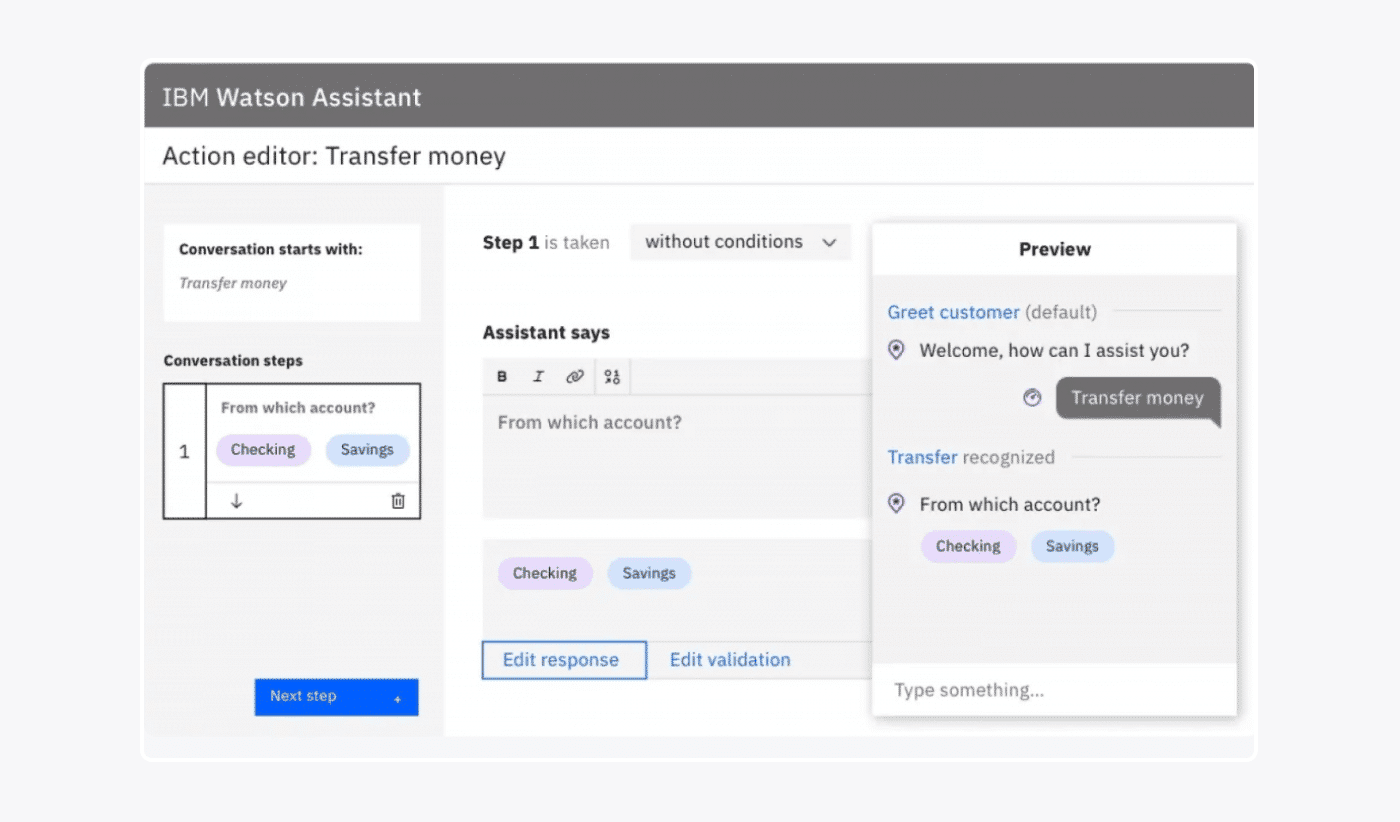
Ratings: 4.4/5 ⭐️ (290+ reviews)
Developers can utilize this retail industry chatbot company to construct bots capable of handling both straightforward and intricate customer interactions. The company offers a cloud-based Natural Language Processing (NLP) service that integrates structured data, such as customer databases, with unstructured data, like messages.
In terms of security and privacy, this platform places great importance on these aspects. It implements measures like visual recognition security and provides a private cloud for storing users’ data.
Main features:
- Customer sentiment analysis
- Custom categories classification
- Predictive analytics
- Free plan available
- Plus (from $140/mo)
- Enterprise → contact sales
Drift
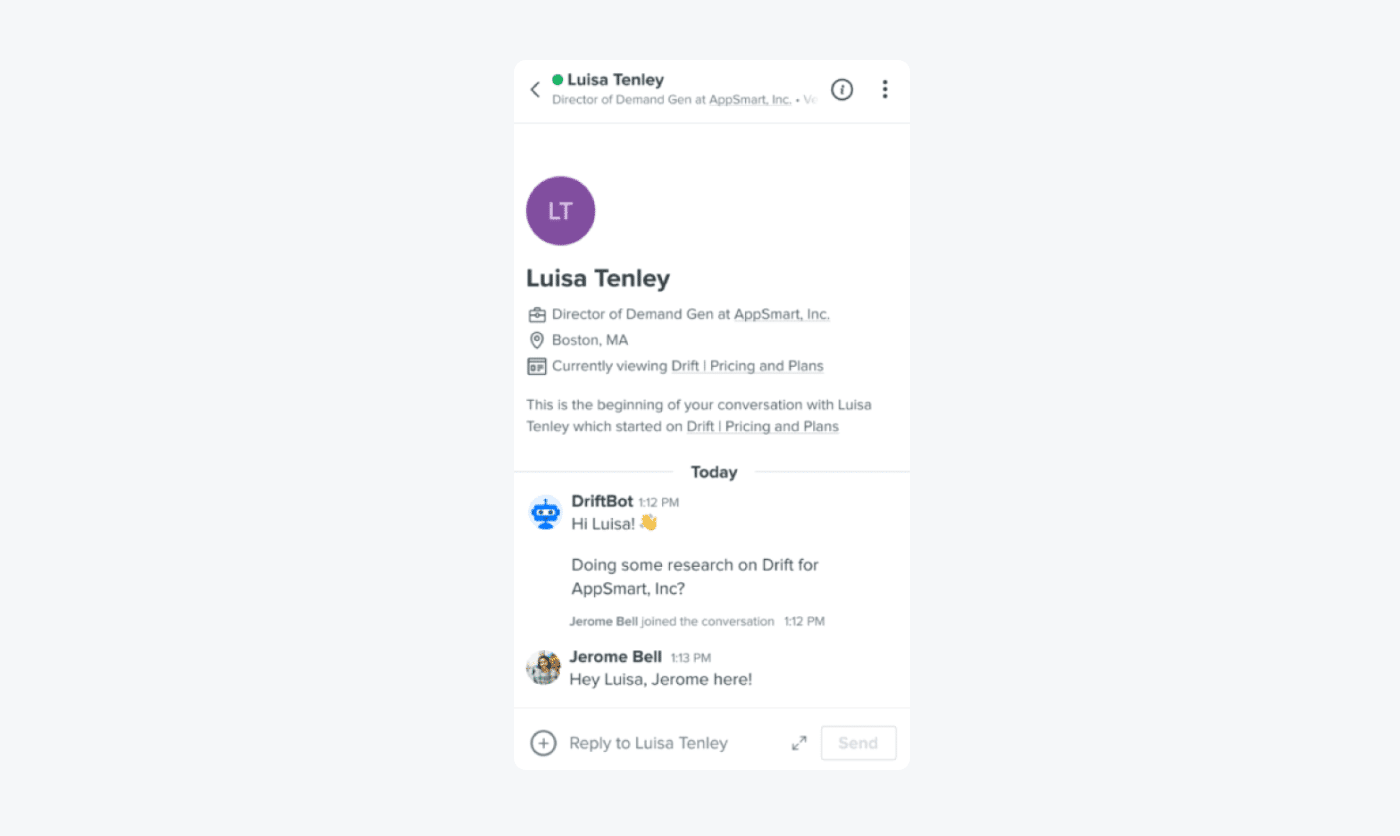
Ratings: 4.4/5 ⭐️ (1,180+ reviews)
Drift chatbots are designed to assist retail companies in initiating conversations with shoppers and addressing inquiries. These bots offer a personalized user experience and facilitate real-time engagement for buyers.
Moreover, this is one of the chatbot for retail solutions that automatically gathers customer data from your shoppers and gives you valuable insights into their behaviors. You can also easily schedule meetings with potential clients to reach decision-makers more promptly.
Main features:
- Exceptional customer support
- Seamless integrations with Zapier, MailChimp, and more
- Convenient meeting scheduling options
- Premium (from $2,500)
- Advanced & Enterprise plans → contact sales team
Read more: Check out the best Drift alternatives and competitors available.
Now, it’s time to look at four types of chatbots for retail.
Types of retail chatbots
Shopping chatbots come in various types, each designed to cater to different customer needs and enhance the overall shopping experience. From basic rule-based chatbots to advanced AI-driven and conversational bots, companies have a wide range of chatbot solutions to choose from.
Here are four common types of these seller bots:
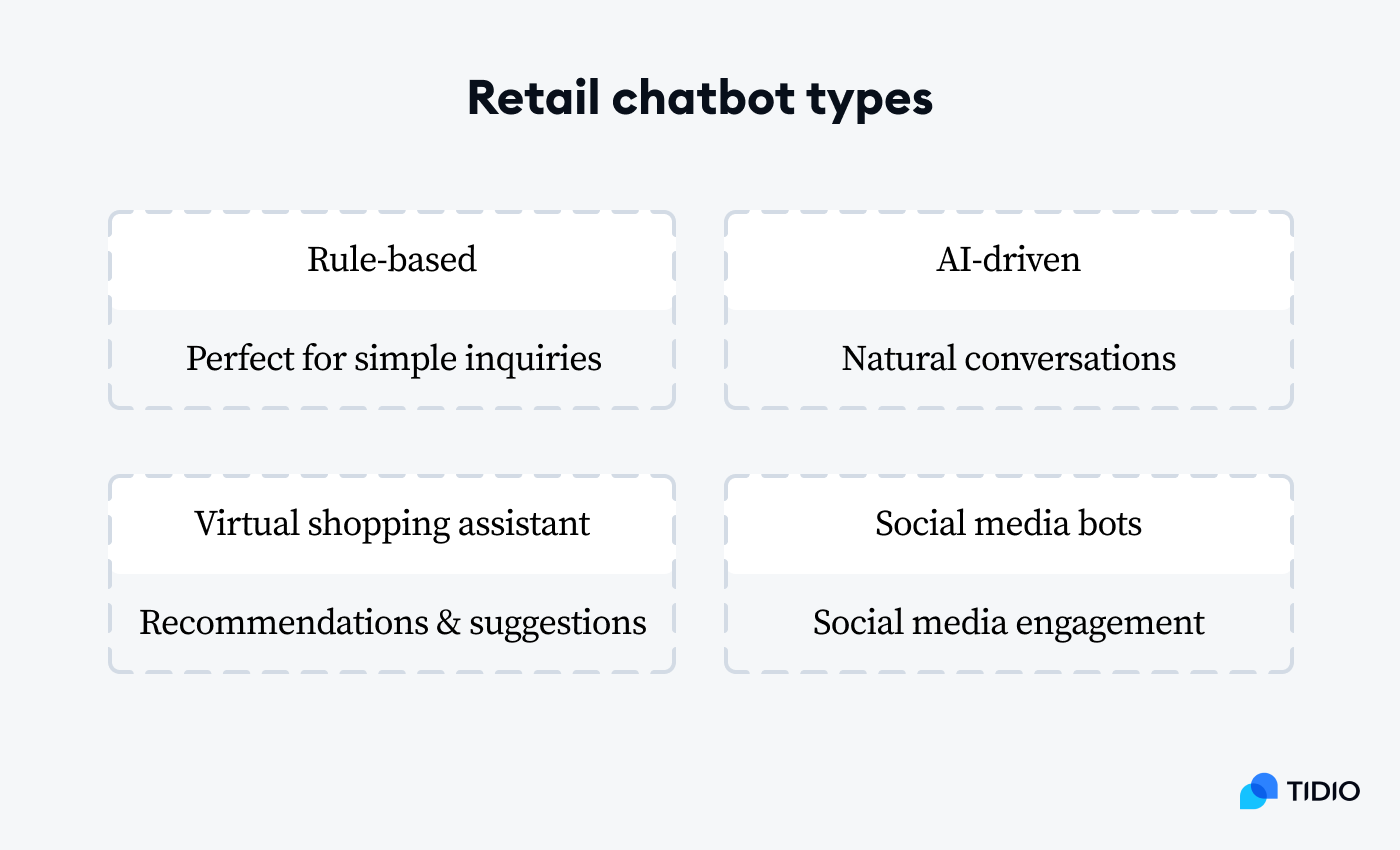
Basic/rule-based chatbots
These chatbots help customer service agents handle the workload. They follow a predefined set of rules and are designed to handle customer inquiries or simple transactions. While these retail bots may not have advanced capabilities, they are useful for addressing simple customer queries and providing basic information.
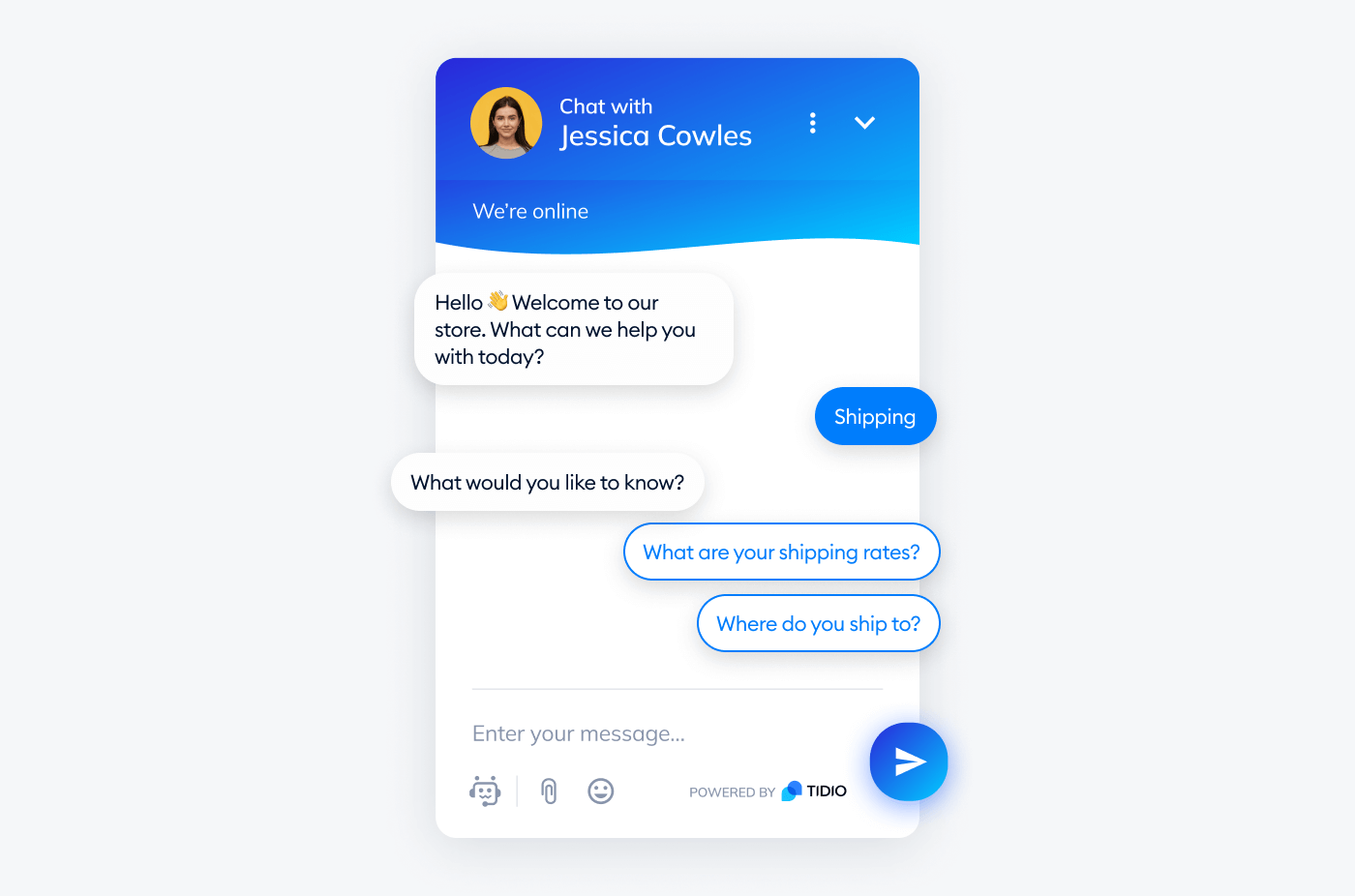
Rule-based chatbots aim to instantly and accurately respond to users 24/7, reducing the wait time for customers. In the world of retail, providing prompt and accurate answers to customer inquiries is a crucial aspect of delivering positive shopping experiences.
AI-driven chatbots
AI chatbots leverage artificial intelligence and machine learning algorithms to understand natural language and offer more sophisticated responses. These chatbots can handle complex queries, engage in natural conversations with customers, and extend personalized recommendations based on customer preferences and past behavior.
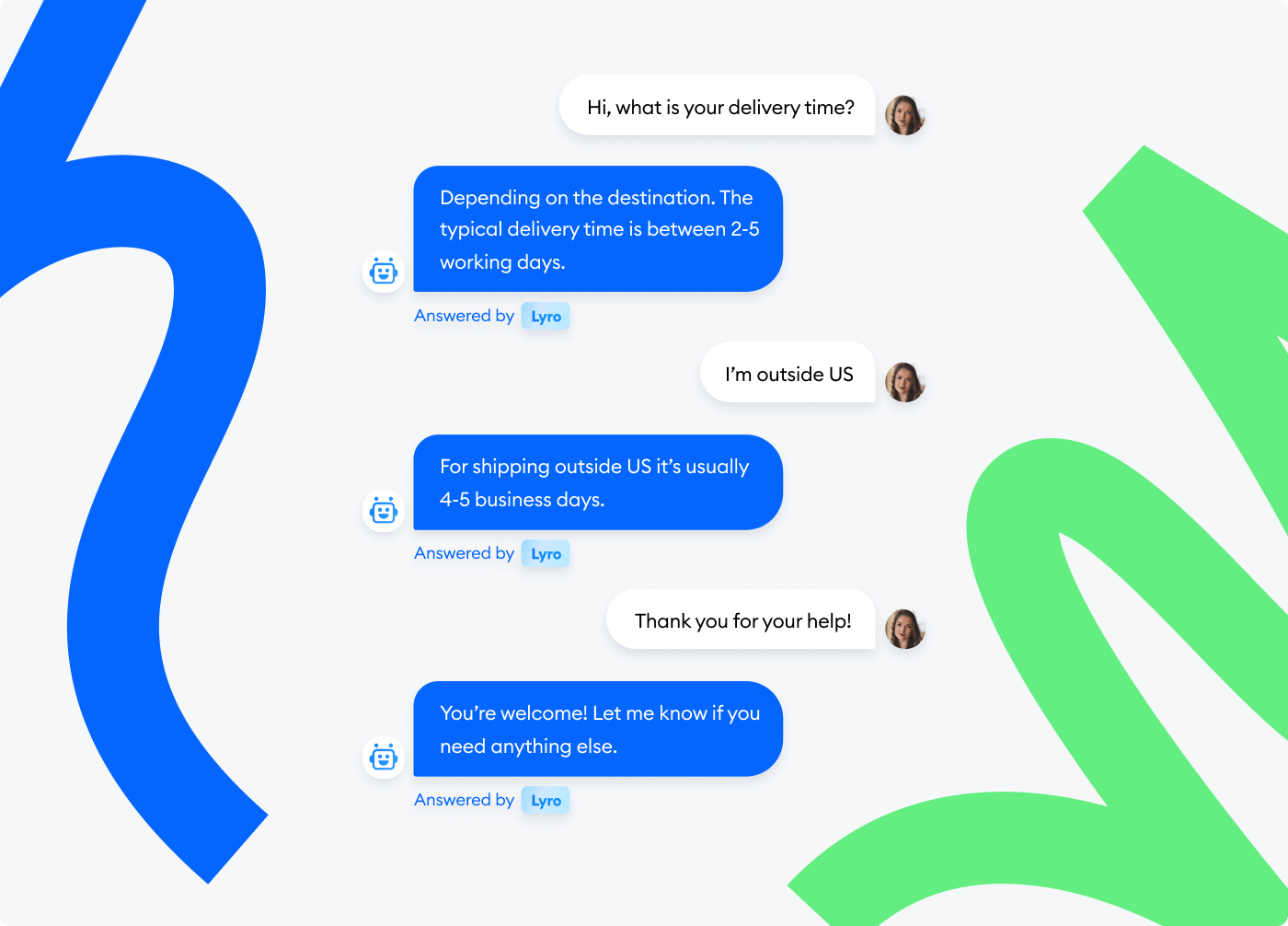
Moreover, they continuously learn and improve their responses over time. Conversational AI chatbot resellers understand context, emotion, and intent, enabling more interactive and meaningful conversations with shoppers.
Get the most advanced conversational AI for retail on the market
Virtual assistants
Virtual shopping assistants are like the assistants in the physical store. They guide customers through the entire purchasing process. On top of this, they can offer detailed product information, suggest suitable options based on customer preferences, and help with payment.
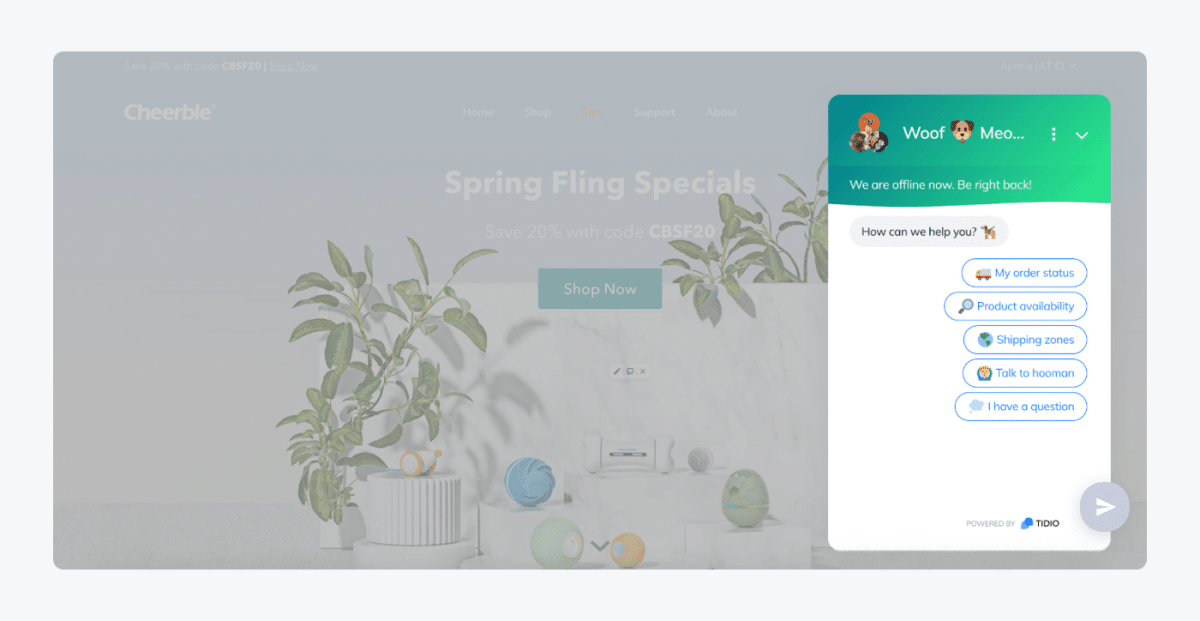
They can even track orders and help customers request refunds. Even though they primarily take care of recommendations and assist the client in finding the right products, these retail bots can also answer any queries customers may have during their shopping journey.
Read more: See how Bella Sante, a med SPA, increased their revenue with the help of conversational chatbots.
Social media chatbots
With the growing popularity of social media platforms, it’s beneficial for your retail chatbots to be integrated into messaging apps and social media platforms to engage customers.

Social media retail chatbots can initiate conversations, answer inquiries, and provide personalized assistance straight from your social media accounts. Whether it’s Facebook, Instagram or Twitter, these bots can enhance your brand’s social media presence while increasing your shoppers’ engagement.
Read more: Discover what Instagram chatbots are, how to make Facebook chatbots, and how to use a WhatsApp chatbot.
Okay—
Let’s have a look at some of the chatbot use cases in retail.
Applications of retail chatbots: top five examples
Chatbots have a wide range of applications within the retail sector, offering innovative solutions to various challenges faced by businesses.
Here are some of the key retail chatbot examples:
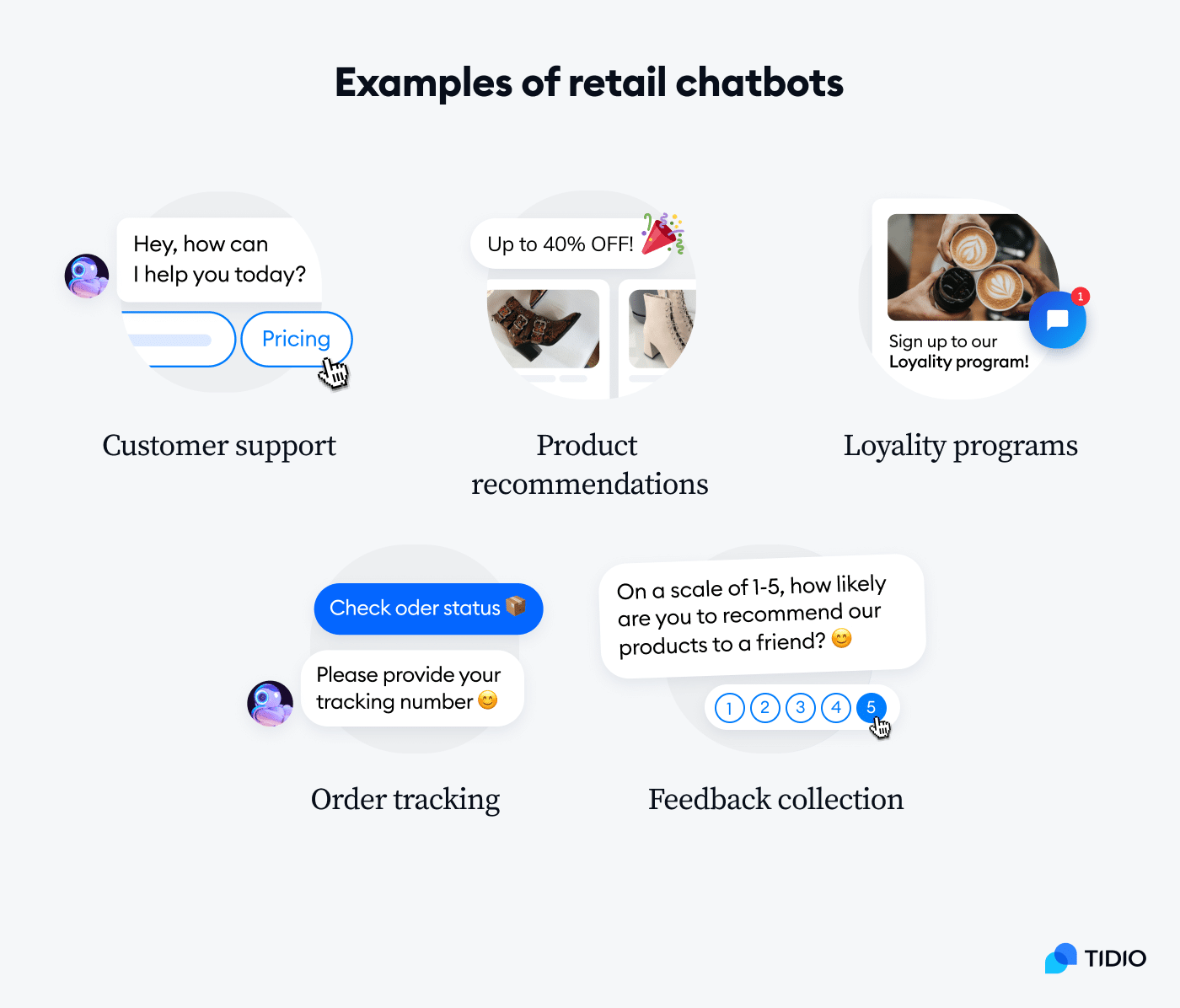
1. Customer support
One of the primary uses of retail chatbots is to streamline customer support. They can provide instant and accurate responses to a wide range of customer service questions. These bots enhance customer satisfaction while reducing the workload on human representatives.
Here’s an example of this application from Lidl:
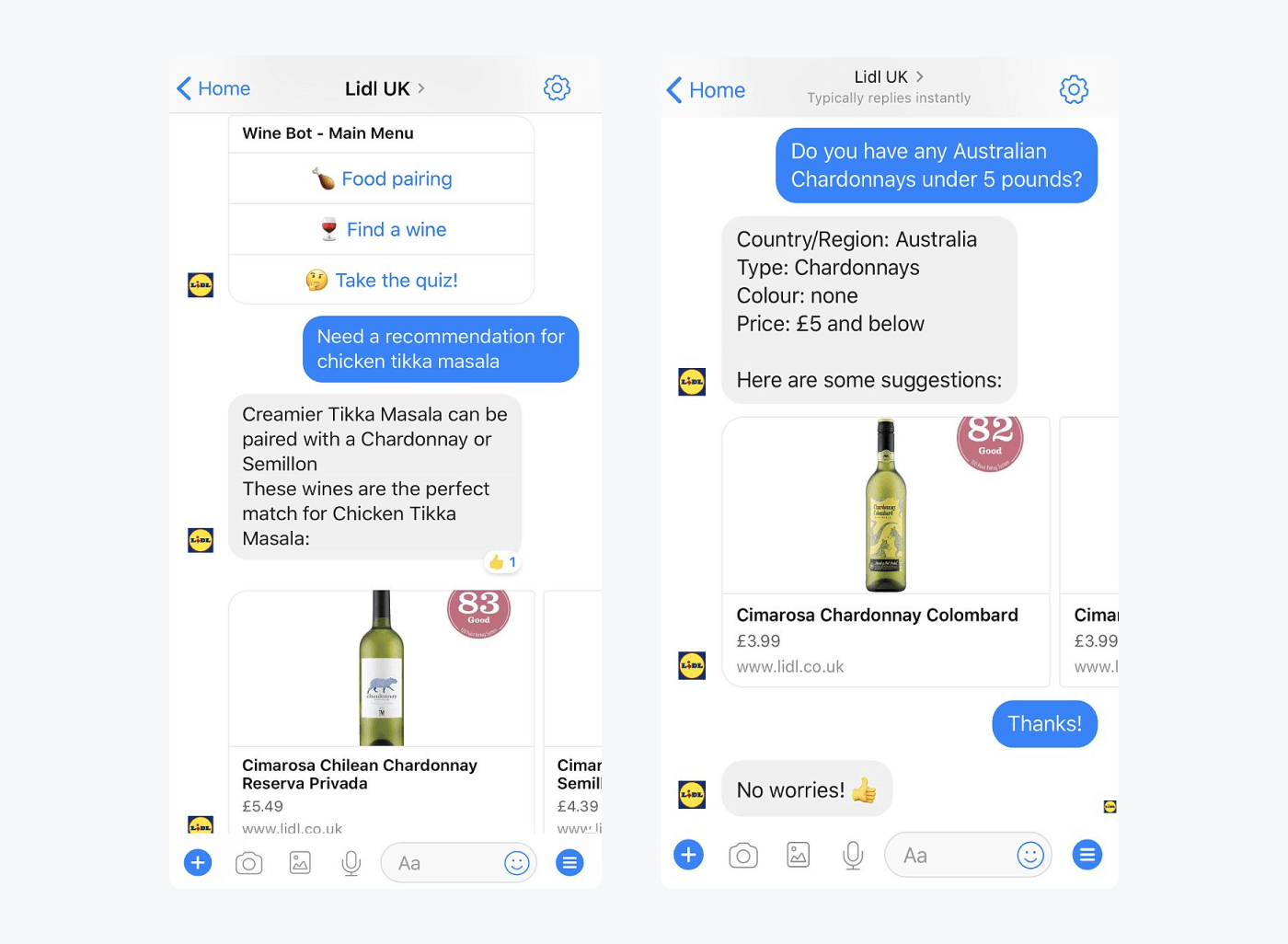
2. Product recommendations
Chatbot for retail can analyze customer preferences, browsing history, and purchasing behavior to deliver personalized product recommendations. By understanding individual needs and interests, chatbots can suggest items that align with customers’ tastes, in turn driving sales.
Here’s an example of this shopping bot app:
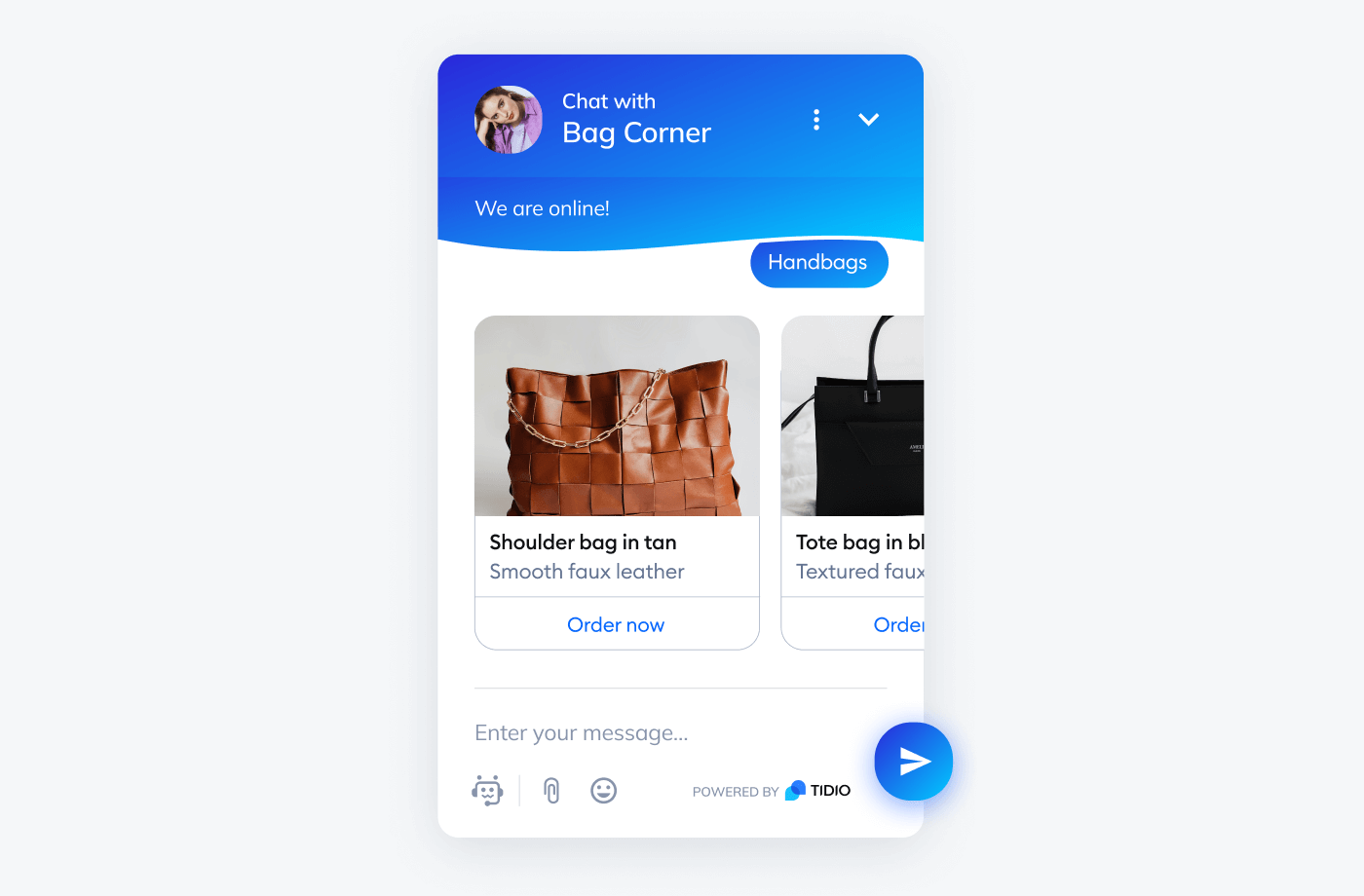
Did you know that…
Research shows that having a chatbot boosts a company’s sales by over 67%.
3. Order tracking and notifications
Retail chatbots can keep customers updated about the status of their orders through real-time notifications. Customers can receive personalized updates on their order’s progress, estimated delivery times, and any changes in the shipping status. This proactive communication ensures transparency and allows shoppers to stay informed about their purchases.
And here’s an example from Zalando and UPS of this use case:
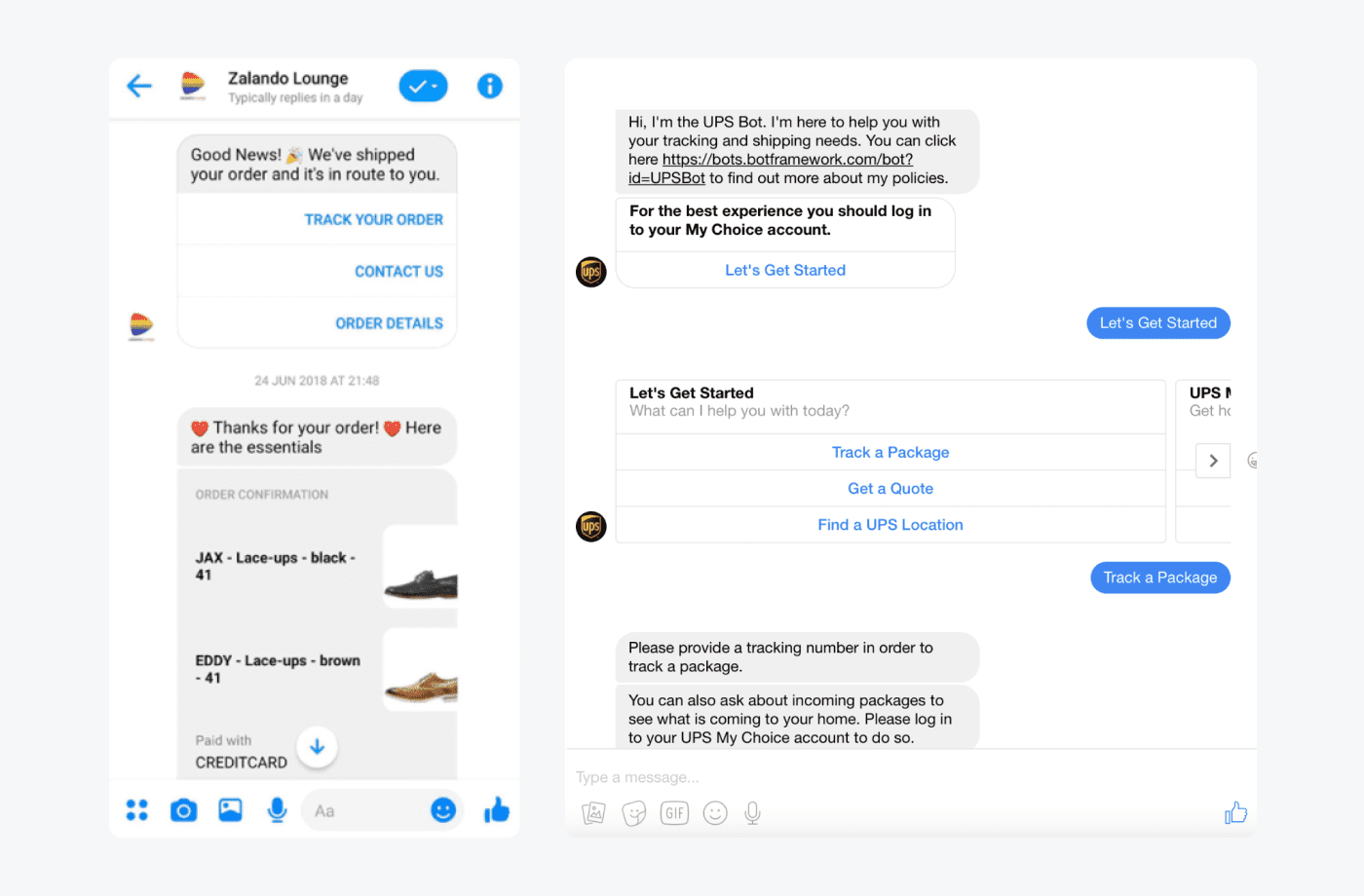
4. Loyalty programs and offers
Chatbots can be integrated with loyalty programs to provide personalized offers and rewards to customers. Retail membership chatbot can track customer engagement to manage loyalty programs. It does so by offering shoppers to sign up after a specific action was taken on your website. This can help your company foster customer loyalty and grow your membership program.
Have a look at this example from Petron Malaysia:
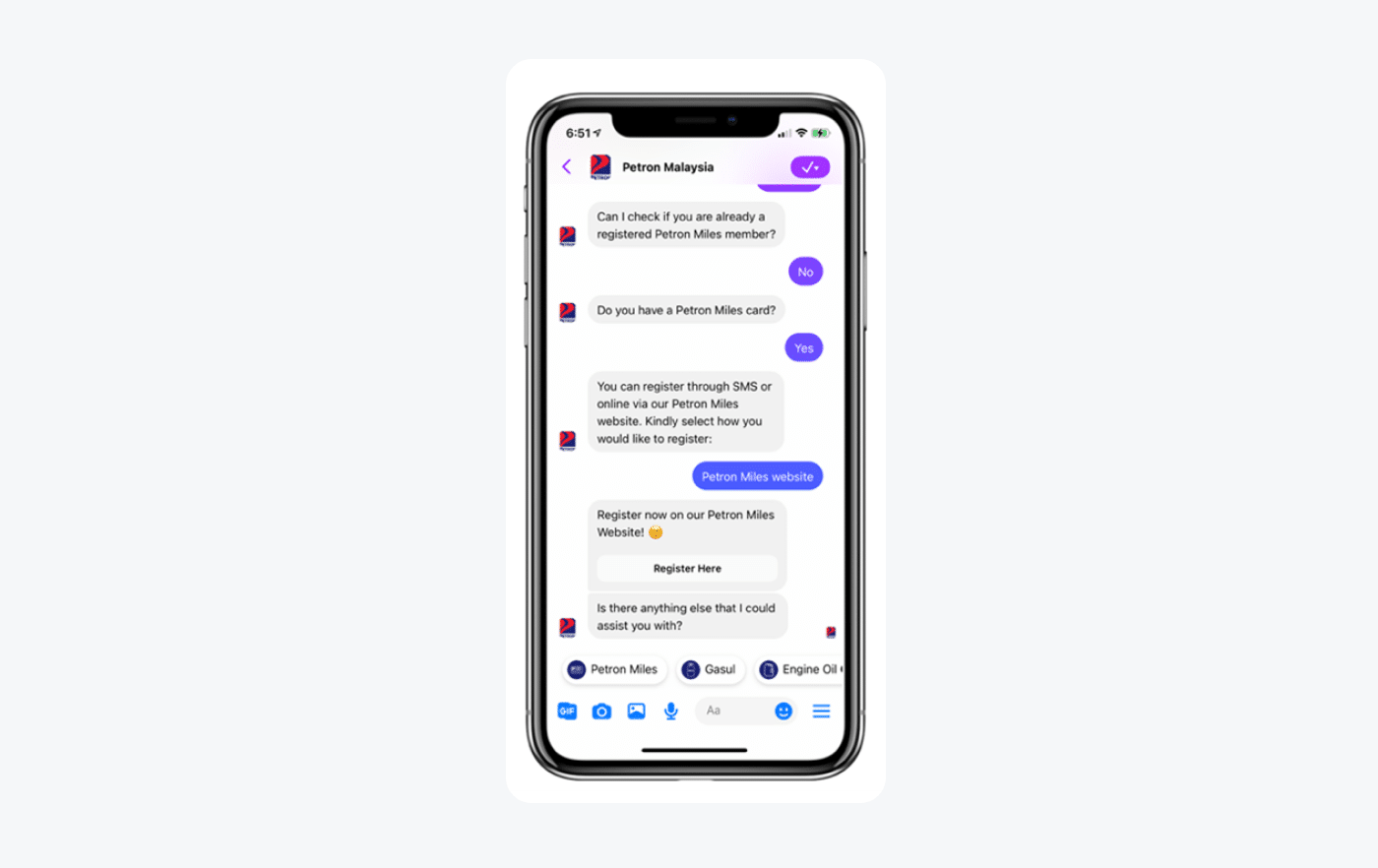
4. Feedback collection
Retail chatbots powered by artificial intelligence can conduct satisfaction surveys and collect customer feedback straight on your website. Chatbots can also engage shoppers in a conversation and gather more in-depth insights regarding their retail experience. You can then use this information to improve your products, services, and overall offerings.
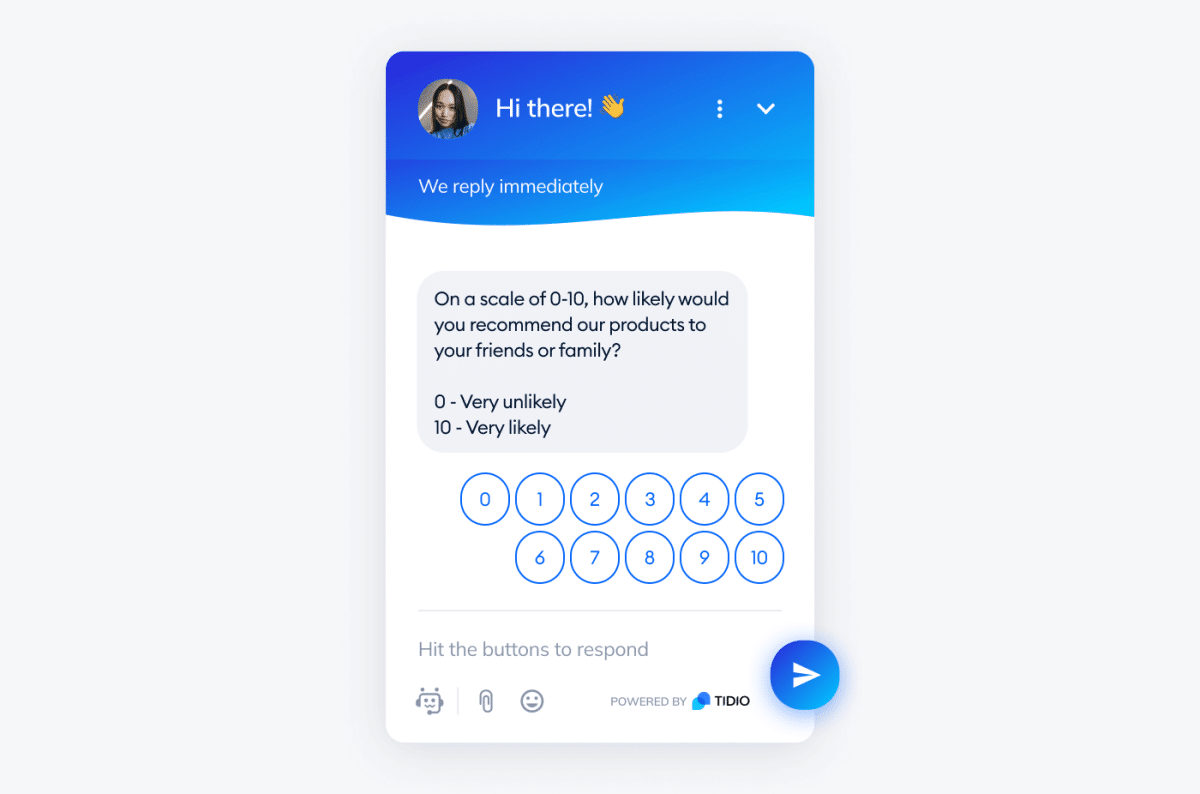
Did you know that…
Study shows that 77% of shoppers have a more favorable view of businesses that ask for and accept feedback from customers.
Overall, the applications of ecommerce chatbots are diverse and offer a range of benefits to businesses. From providing personalized service and product recommendations to streamlining customer support and enhancing customer engagement, chatbots are revolutionizing the buyer’s experience. Implementing retail chatbot solutions gives your company a competitive edge, drives sales, and helps to deliver exceptional customer service.
Read more: Check out the best AI sales assistant software available
With applications of retail chatbots out of the way, let’s look at some tips and best practices you can follow to get the most out of your bots.
Best practices for chatbots in retail industry
Chatbots in retail are a revolutionary way that companies use to interact with customers, provide great service, and improve the overall shopping experience. However, to ensure the success of the implementation, certain best practices should be followed.
Here are some key considerations for building and deploying effective bots for the retail industry:
1. Understand your audience
Before developing retail chatbots, it’s crucial to have a clear understanding of your target audience. Ask yourself questions like:
- What are their preferences?
- What are their needs?
- What pain points do they have?
Consider conducting customer research and analyzing this data to gather valuable insights about your customers’ journey. This will help you in the retail chatbot development, including its capabilities and features.
2. Define clear goals and objectives
It’s important to clearly identify the goals and objectives for your retail chatbots. Define what you’re looking to achieve with them. Here are the questions you can address in the process:
- Do you want to provide basic customer support?
- Are you looking to offer product recommendations?
- Or maybe you want some help in driving sales?
Having a clear focus will help in designing the conversation flow and determining the necessary functionalities for your chatbot.
3. Start with a simple chatbot and scale gradually
Begin with a chatbot that can handle simple queries and add more features and functionalities as you go based on user feedback and needs. This approach allows for continuous improvement and avoids overwhelming users with a complex chatbot experience.
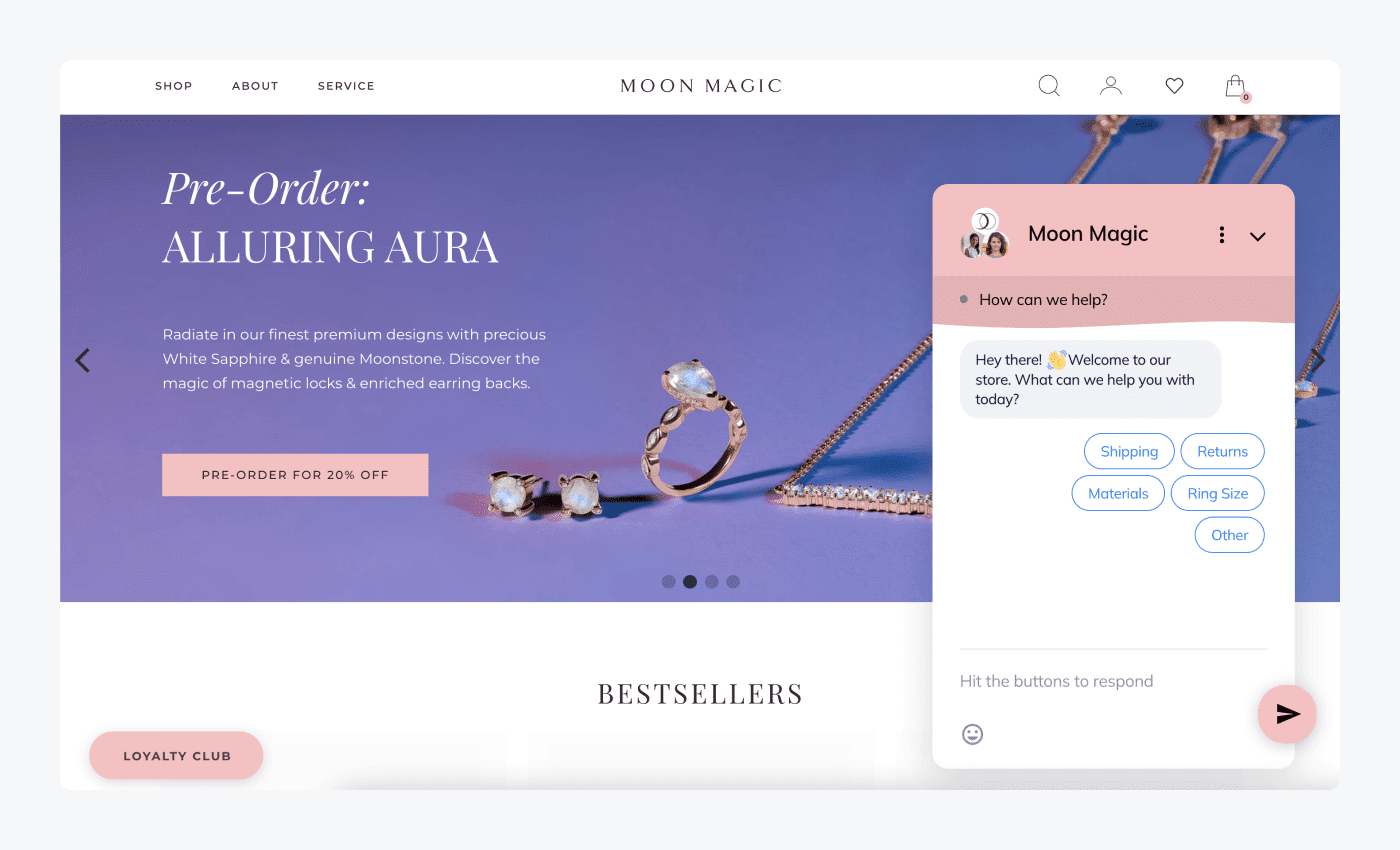
Also, you should offer a seamless transition to human agents. There will be instances where customers require human assistance, especially for complex or sensitive matters.
Moreover, make sure to keep an eye on your chatbot analytics and update your business chatbot regularly with the latest product information, promotions, and policies. This is especially important with simple bots as they can’t learn by themselves and therefore have to rely on the data you give them.
4. Use natural language processing (NLP)
With time, you should make the most out of the latest technologies, such as AI and NLP chatbots.
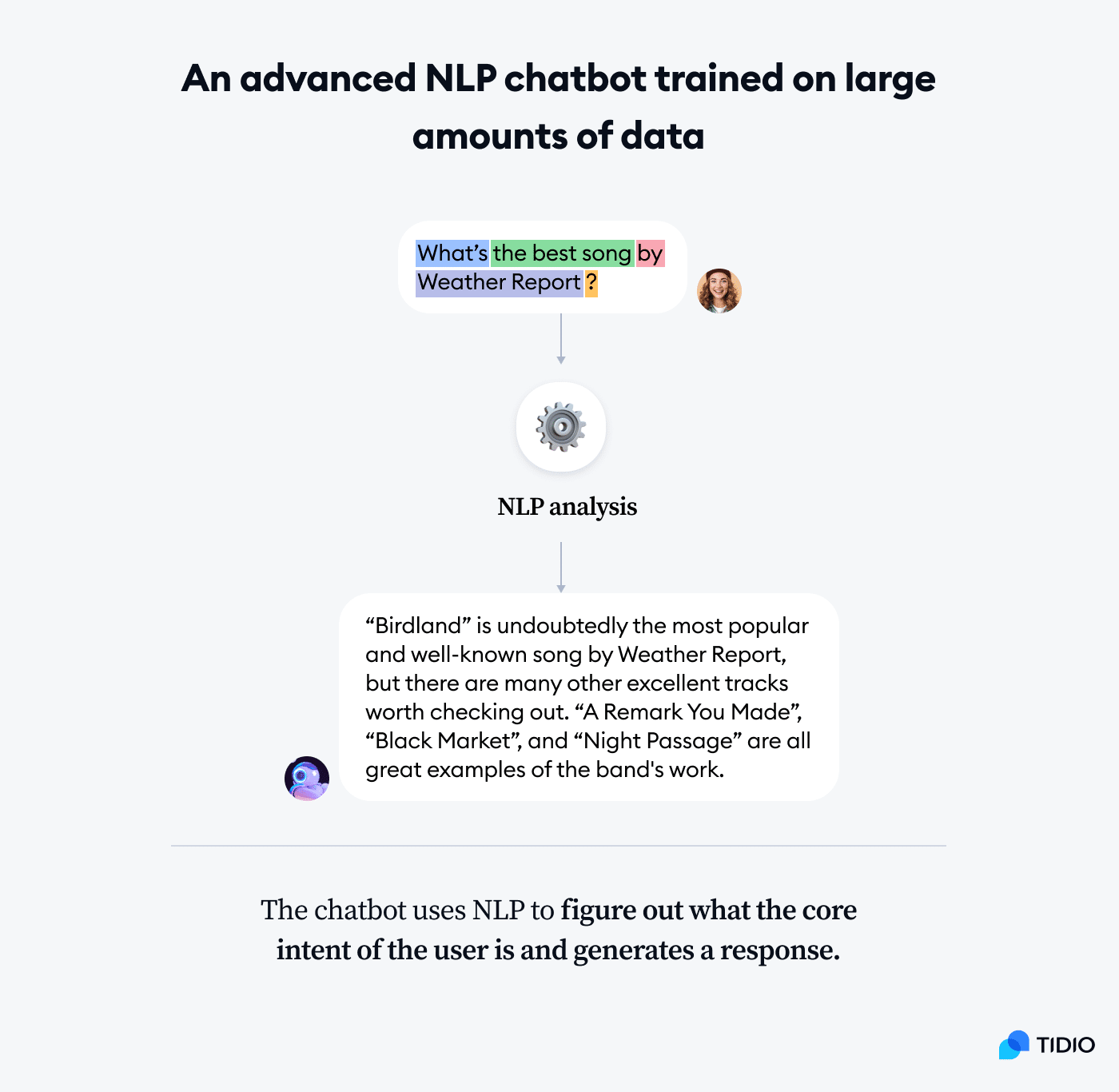
This is vital for enabling your retail chatbot to understand and interpret customer queries more accurately. Natural language processing algorithms can be trained to recognize different sentence structures, synonyms, and intents, improving the chatbot’s ability to respond appropriately to a variety of customer requests.
Using the current chatbot technologies improves the overall user experience and better their interactions with your brand.
5. Incorporate personalized recommendations
Leverage the power of artificial intelligence and machine learning algorithms to offer product recommendations to customers.
This technology can analyze customer browsing and purchasing history to offer tailored suggestions to users. As a result, it increases your chances of driving sales and enhancing customer satisfaction.
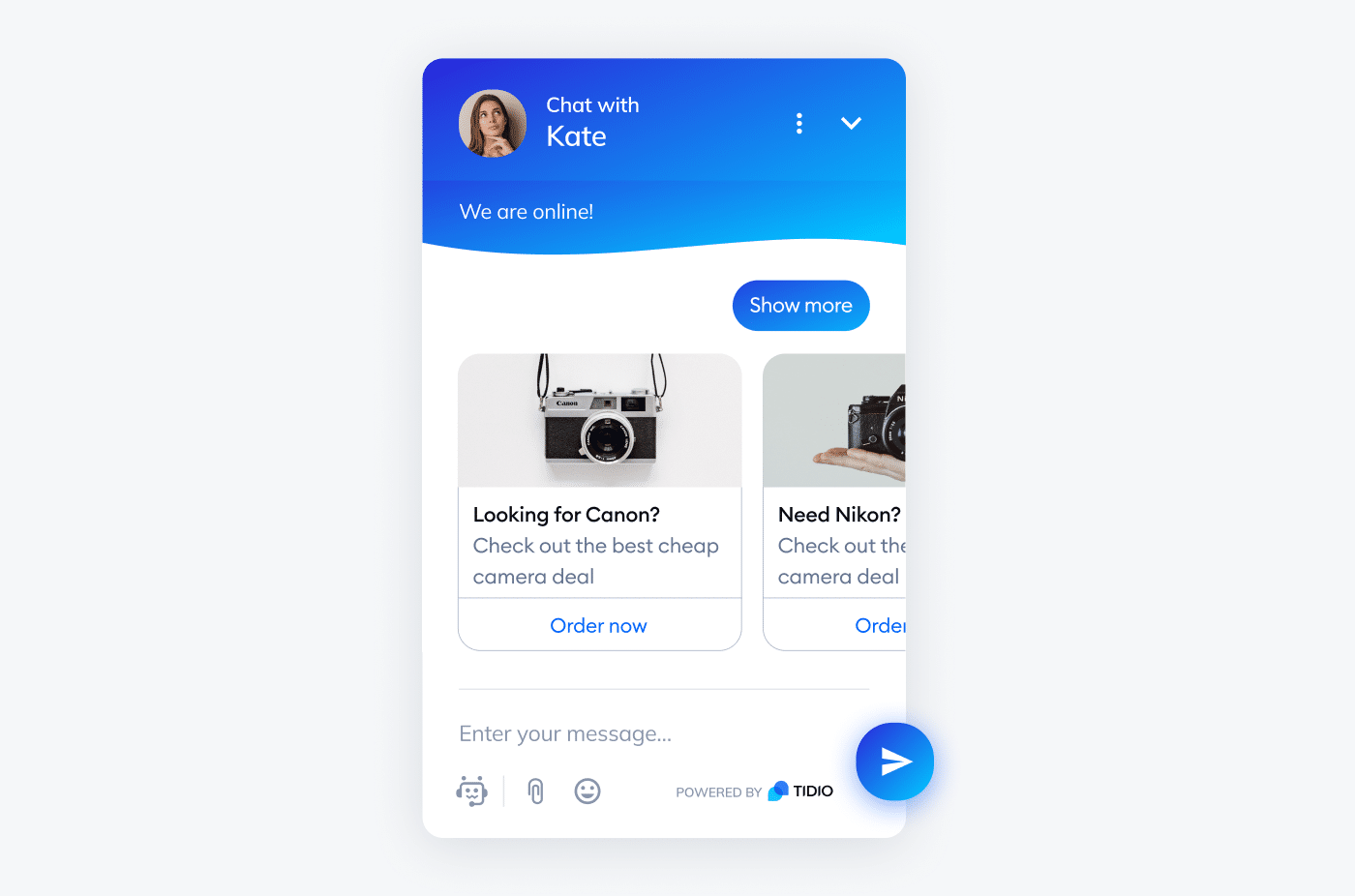
That’s all for the best practices. Follow these tips, and you’re sure to gain a competitive edge in this ever-evolving retail sector.
OK—
Let’s have a look at some of the best tools for you to use.
Retail chatbots: key takeaway
So, let’s review what we learned today.
Retail chatbots are virtual shopping assistants designed specifically for the retail industry. They help businesses improve personalization, enhance customer experience, and, ultimately, increase sales.
Some of the best practices for implementing chatbots for your retail store include:
- Understanding your target audience first
- Defining clear goals and objectives
- Starting with simple chatbots and gradually developing them
- Using natural language bots
- Incorporating personalized recommendations
And if you’re looking for the best retail chatbot solutions, you should try Tidio, IBM Watson, or Drift. The features available in these bot platforms are sure to suit your needs.
Get the most advanced conversational AI for retail on the market
Frequently Asked Questions
A retail chatbot is an AI-powered software application designed to improve the customer experience and drive sales in the retail industry. These bots are often integrated into ecommerce websites, mobile apps, social media platforms, and messaging apps to provide seamless customer service and support.
In retail, chatbots are used to enhance customer interaction and streamline various aspects of the shopping experience. They provide real-time customer support by answering common queries about products, prices, availability, and return policies. Chatbots can also assist with order processing, helping customers place orders, track shipments, and initiate returns or exchanges. In addition, they offer personalized product recommendations based on the customer’s browsing history and preferences.
AI is transforming retail by enhancing customer experiences, optimizing operations, and enabling better decision-making. It utilizes recommendation engines to analyze customer data for personalized product suggestions and employs chatbots for real-time customer support. Also, AI offers insights through behavioral analytics and sentiment analysis, helping retailers tailor marketing and improve services.

